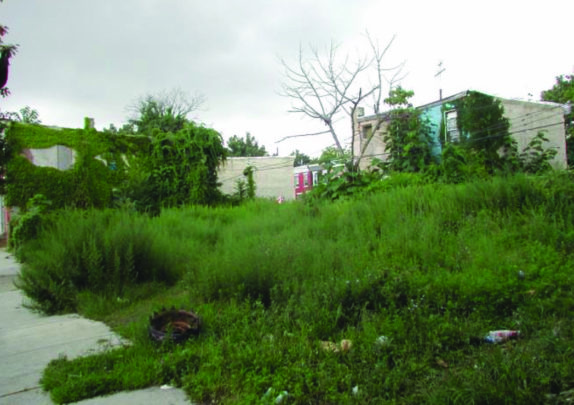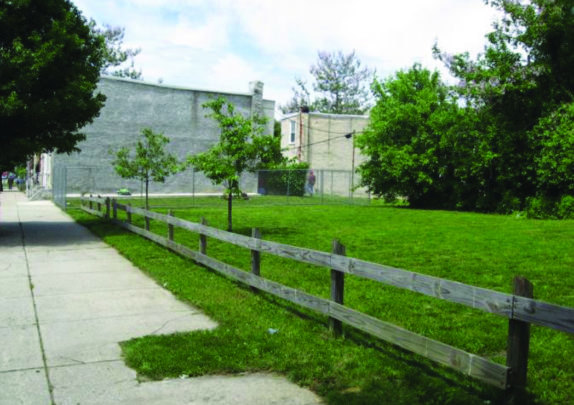Crime Prevention Through Environmental Design
Philadelphia has successfully implemented Crime Prevention Through Environmental Design (CPTED) by restoring blighted and vacant urban land. The Pennsylvania Horticultural Society’s LandCare program “cleans and greens” vacant lots to reduce crime and create community spaces.1Philadelphia Horticultural Society, “LandCare FAQs,” accessed October 10, 2019, https://phsonline.org/programs/landcare-program/landcare-faqs/. The program has existed since 1996 but was expanded to a citywide initiative in 2003.2Ibid.
The LandCare process is straightforward: Debris is cleared from vacant lots, grass and trees are planted, and a fence is added to preserve and maintain the greenery.3Ibid. The fence is not intended to keep residents from the space but rather to signal that the lot is well-maintained and to deter illegal dumping.4Ibid.
LandCare partners with landscape businesses and community organizations to maintain the lots, and the city of Philadelphia provides all of the funding for the program.5Ibid. In 2019, LandCare began providing work opportunities to ex-offenders through its Roots to Re-entry initiative.6Ibid. In 2019, 25 ex-offenders were hired and trained to perform landscape maintenance.7Ibid.


The program is inexpensive to execute and highly cost-effective. Initial expenses to “clean and green” the lots average $5 per square meter, and maintenance of the lots averages $0.50 per square meter.8Charles C. Branas et al., “Citywide Cluster Randomized Trial to Restore Blighted Vacant Land and Its Effects on Violence, Crime, and Fear,” Proceedings of the National Academy of Sciences 115, no. 12 (February 2018): 2946–2951.
As of April 2019, over 12,000 lots comprising 16 million square feet have been converted to green spaces.9Philadelphia Horticultural Society, “LandCare FAQs.” The impact of greening these lots has been a 29 percent reduction in gun violence, a 13 percent reduction in crime overall, and a 22 percent reduction in burglary.10Branas et al., “Citywide Cluster Randomized Trial.” Residents report feeling safer utilizing outdoor spaces.11Ibid.